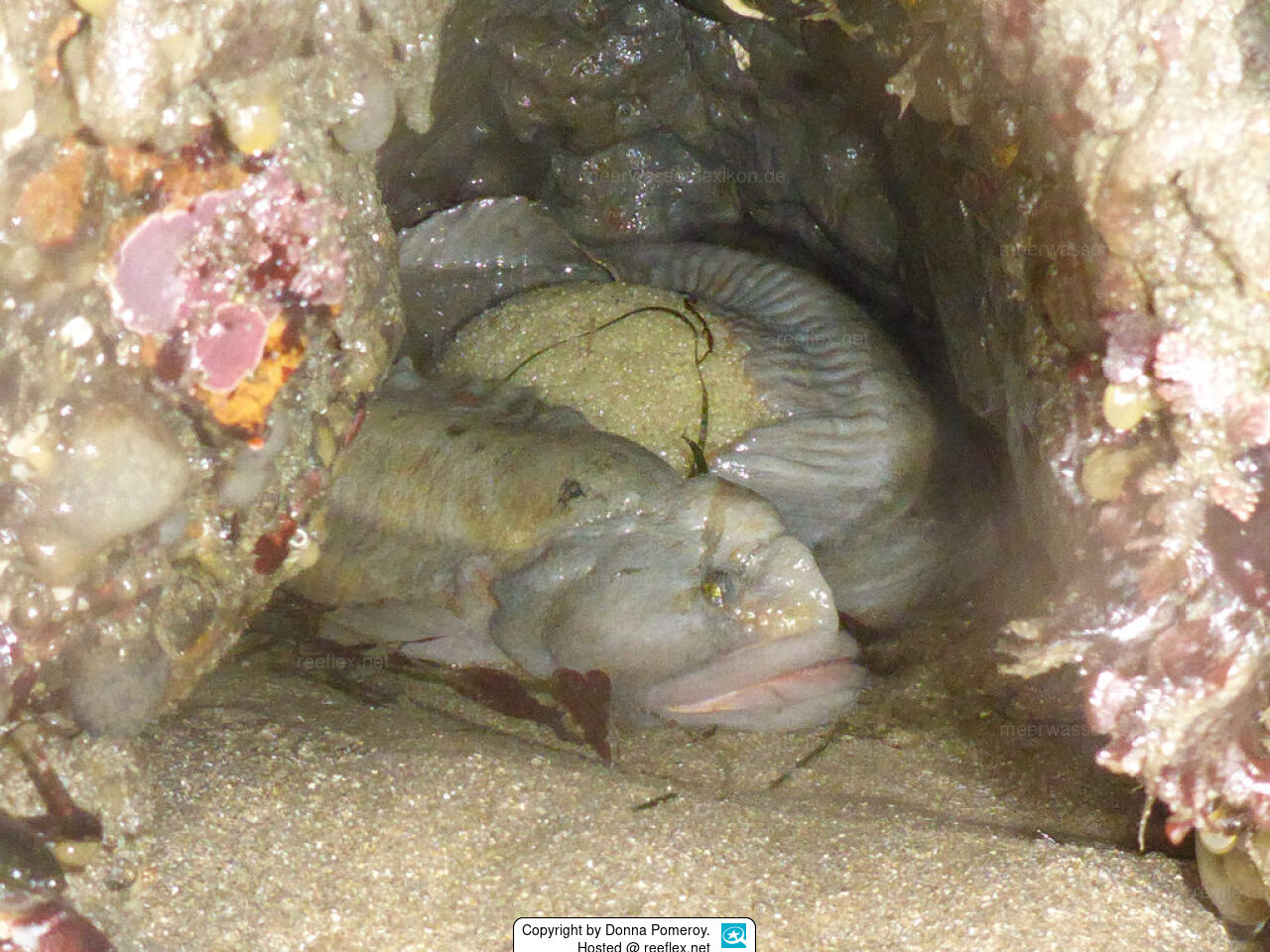Info
Cebidichthys violaceus (Girard, 1854)
Juveniles eat crustaceans and algae, at size 5-7.5 cm they become herbivores mostly.The eel-like body allows them to live hidden in crevices and holes in rocky reefs, rocky tidal zones and kelp forests.
Synonyms:
Apodichthys violaceus
Cebidichthys cristagalli
Jumping guard
A jumping guard prevents (nocturnal) fish from jumping out.
Wrasses, blennies, hawkfishs and gobies jump out of an unprotected tank in fright if their night rest is disturbed, unfortunately these jumpers are found dried up in the morning on carpets, glass edges or later behind the tank.
https://www.korallenriff.de/en/article/1925_5_Jump_Protection_Solutions_for_Fish_in_the_Aquarium__5_Net_Covers.html
A small night light also helps, as it provides the fish with a means of orientation in the dark!
Juveniles eat crustaceans and algae, at size 5-7.5 cm they become herbivores mostly.The eel-like body allows them to live hidden in crevices and holes in rocky reefs, rocky tidal zones and kelp forests.
Synonyms:
Apodichthys violaceus
Cebidichthys cristagalli
Jumping guard
A jumping guard prevents (nocturnal) fish from jumping out.
Wrasses, blennies, hawkfishs and gobies jump out of an unprotected tank in fright if their night rest is disturbed, unfortunately these jumpers are found dried up in the morning on carpets, glass edges or later behind the tank.
https://www.korallenriff.de/en/article/1925_5_Jump_Protection_Solutions_for_Fish_in_the_Aquarium__5_Net_Covers.html
A small night light also helps, as it provides the fish with a means of orientation in the dark!







 Donna Pomeroy, USA
Donna Pomeroy, USA




